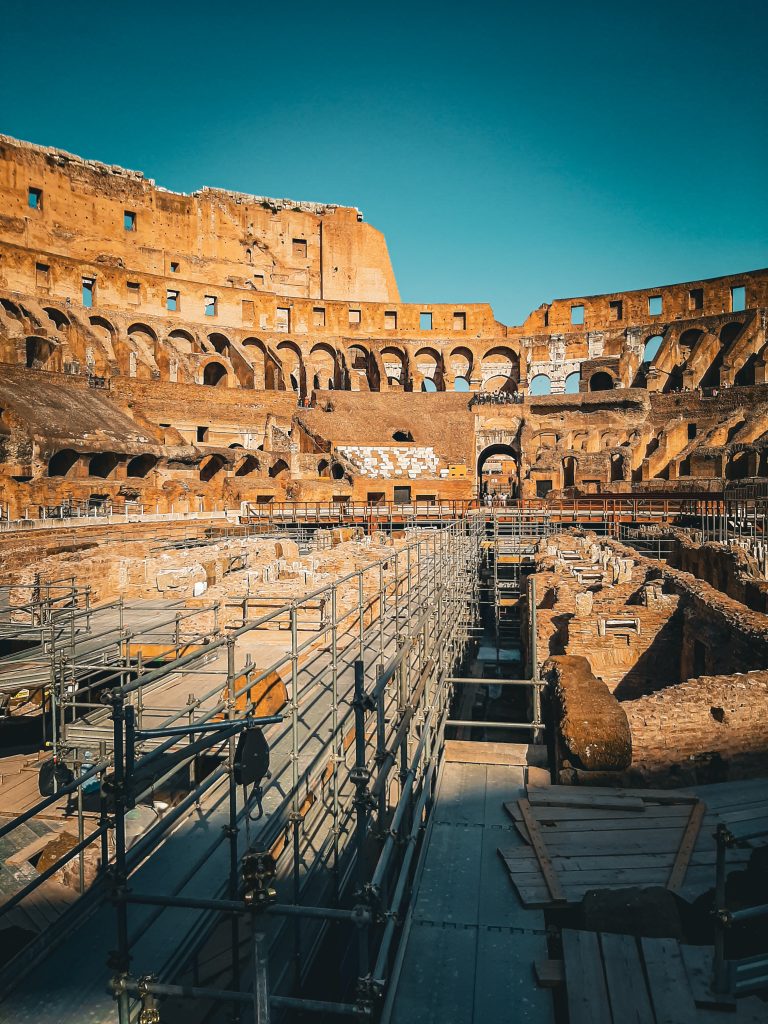The Roman Colosseum, also known as the Roman Amphitheatre, the Colosseo, or the Flavian Amphitheatre, is located in the heart of Rome, southeast of Piazza Venezia. It is a landmark building in Rome, symbolizing ancient Roman culture. Originally completed in AD 80, the Colosseum served as the battleground where gladiators fought for their lives and condemned prisoners faced off against hungry lions, becoming an enduring symbol of ancient Rome. However, as the Roman Empire declined in the 6th century, the Colosseum fell into disuse and was subsequently abandoned.

Over the course of more than 1,000 years, the Colosseum suffered damage from earthquakes and was partially dismantled by builders. Today, only the skeletal remains remain, but they still offer a glimpse into its former grandeur.

Externally, the Colosseum has four levels, but currently, only part of the ground level and the second level are accessible. On the ground level, the central maze-like structure, which once served as the underground area for holding wild beasts and gladiators before their duels, is clearly visible. The exterior walls of the entire Colosseum are constructed of limestone, featuring 80 arches on each level. The recesses on the second and third floors were once adorned with marble statues, and the top of the walls was embellished with windows and slender Corinthian columns. There were 240 columns supporting the canvas awning covering the Colosseum, providing shade for the spectators. Unfortunately, the canvas awning is no longer present.

Internally, the Colosseum is divided into three parts: the arena, the seating area, and the podium. The arena has a wooden floor covered with sand to prevent gladiators from slipping and to absorb spilled blood. Trapdoors in the arena floor led to the underground chambers and passages beneath the Colosseum. A pulley system lifted caged animals into the arena for combat. The seating area is divided into three tiers: the lower tier for knights, the middle tier for wealthy citizens, and the upper tier for commoners. The steep incline of the seating ensures that spectators from all levels have a clear view of the performances.



